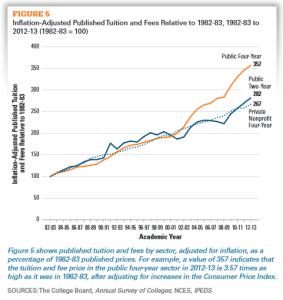The verdict is in. Post-secondary students are unsatisfied consumers if their money cannot afford them two things: access and success.
Students not only want to be able to afford college without signing over the next 40 years of their life to loan repayments, but they also want to be able to successfully complete college.
At Stanford, the narrative about access and success is tinted by our Cardinal-colored glasses. Instead, we envision for ourselves four years that are dedicated to helping us dream big, better the world and cultivate the self. Frankly, when the lenses are off, the privileges of my learning institution almost guarantee the relevant criteria, access and success, are met.
Stanford undergraduates likely recognize their choice to attend a well-endowed private university over another institution has different implications for the costs they incur. For the most part, we’re happy to hand over the cash for our product; as a result, we have no reason to commiserate with fellow, albeit financially distressed, post-secondary students.
Still, if access and success are our base concerns, then attending an outlier institution should not exempt us from participating in the mainstream movement of post-secondary students. Further, as privileged post-secondary students, we are uniquely perched to peer through the weeds, to radically rethink the Federal Government’s role in promoting large-scale college access and success. It’s high time legislators depart from the known — and the failed — and instead legislate boldly and inventively.
Perhaps the most relevant piece of public policy to our generation and the generation of older students seeking re-training is up for renewal. The Higher Education Act, a piece of legislation introduced and passed during the LBJ era, expired at the end of 2013; it will soon be ripe and ready for its 10th reauthorization. At the end of June, House Democrats and Republicans respectively introduced distinct proposals for federal student aid and low-interest loan management.
Thus far, the U.S. government’s role on the higher education front has been to enable a 19th-century university model by funding the relevant populations: students and institutions, consumers and providers. Pell Grants and loans allow students to afford a higher education. In turn, the absence of policies, which would place a ceiling on universities’ sticker prices or at least regulate the rate of tuition increases, enable institutions to up the cost on an annual basis. Both the Democrats’ and Republicans’ proposals do more of the same sustaining work.

The best thing the federal government can do for students now is to incentivize higher learning organizations to stop replicating a dated institutional design that began with Harvard in 1663. If we’re honest with ourselves, we know Stanford and other top-tier institutions’ existing models — a one-stop shop for teaching and research, for STEM, the humanities, and social sciences, for athletics and luxury facilities — are often inefficiently replicated by middle- and bottom-tier institutions and cannot be efficiently replicated. Moreover, we know that they don’t meet most students’ needs. Americans who seek out higher education want to know that they can land a job with decent pay post-graduation.
President Obama’s proposed legislation, “Race to the Top: College Affordability and Completion,” summarizes the current administration’s push for universities to meet certain quantitative outcomes. Since 2013, the White House has pushed for the nation’s colleges to prepare the highest proportion of college-educated citizens in the world by 2020.
More broadly, Obama’s outcomes-based strategy also incorporates an incentives plan to improve college quality — tying federal financial aid to schools that produce enough job-attaining graduates. However, leveraging aid in this way is eerily reminiscent of unsuccessful NCLB policies. Obama’s strategy falls short of changing the terms of the game. Even now, students must attend regionally accredited institutions in order to be eligible for federal financial aid.
If we step out of the White House and onto the Hill, a bill sponsored by Matt Salmon, R-Ariz. is the most substantive legislative act that departs from the norm, changing our qualitative expectations for higher education institutions. On July 24, the House began its gradual reauthorization of the HEA by passing a bill to advance competency-based education, learning that values mastery of concepts over the number of completed credit hours. Of course, it looks like H.R.3136 will remain dormant in the Senate.
While we wait for a legislative awakening on the national scale, states like Tennessee and California are experimenting to reduce costs and improve outcomes. Still, private sector and state-level efforts to reimagine higher education deserve the structural support of national policy, without which too-expensive colleges will continue churning out ill-prepared workers.
Contact Natasha Patel at [email protected].